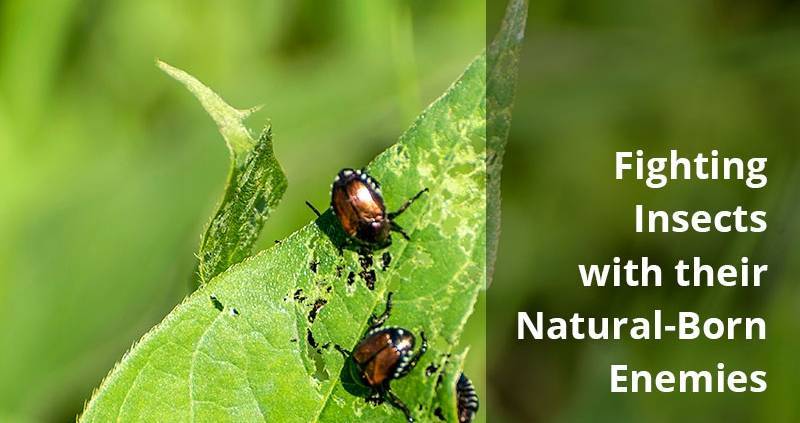Some of the most fascinating methods that can be used to protect cultivated lands and managed forests from pests are those that have developed through biological and evolutionary processes. Like all living things, insects have natural enemies from bacteria to toxic plants to other insects. It seems only logical to mobilize these natural enemies as biopesticides for protecting crops, fruit and nut trees, and ornamentals.
Azaguard is a completely natural insecticide that is based in azadirachtin, named from its source the Azadirachta indica or “Neem tree”. This insecticide contains over 100 limonoid compounds. Limonoids, common in citrus trees and the Neem tree, work as an insect growth disruptor deterring egg-laying and as an anti-feedant leading to insect starvation and death. (Limonoids are also responsible for the sour or bitter taste that citrus fruits offer!) The Azaguard insecticide is effective against destructive pests including termites and the particularly invasive southern armyworm. It is also effective against particular insects that are resistant to other commonly used biopesticides such as the Bacillus thuringiensis bacteria. While most effective when applied during the larval stage, it can be applied at any point during larval, pupal, or nymphal stages of insect development. It should be applied at least every 10 days, and is safe for greenhouse or field applications via drop irrigation, soil drench, fogging, or aerial applications. It is immediately effective, has a 0-day pre-harvest interval, and biodegrades in about 4 days after exposure to light or water.
Apart from using limonoids as a weapon, there are even more complex natural processes that won’t only deter insects but actually kill them. BioCeres WP is a mycoinsectide, meaning it is a microbial insecticide that infects insects with a living pathogen that ultimately causes insect death. In this particular case, Beauveria bassiana fungus is spread to insects including whiteflies, aphids, thrips, weevils, and cabbage maggots. Again, this pathogen is a completely natural enemy to the insect, which has been harnessed to control pests in agricultural settings. The BioCeres biological mycoinsecticide works by adhering to the insect’s outer skin, then penetrating their exoskeleton and infecting them with white muscardine disease. The insects then die within a matter of days. The symptoms of this disease are visible on insects, noted by a white foamy coat, although it is also important to note that this pathogenic process can also successfully kill insects before the symptoms are visibly apparent. Unlike other forms of pesticides, it is very unlikely for insects to develop a resistance to mysoinsecticides due to their natural relationship. BioCeres WP can be applied via soil drench or as a foliar spray every 5-7 days. It is effective during all stages of insect development, has a 4-hour re-entry interval and also has a 0-day pre-harvest interval. Both biopesticide solutions are OMRI and EPA approved, with the former also being Kosher. So next time you’re not sure where to turn to claim victory over the insects, look no further than their own natural-born enemies.


Leave a Reply
Want to join the discussion?Feel free to contribute!